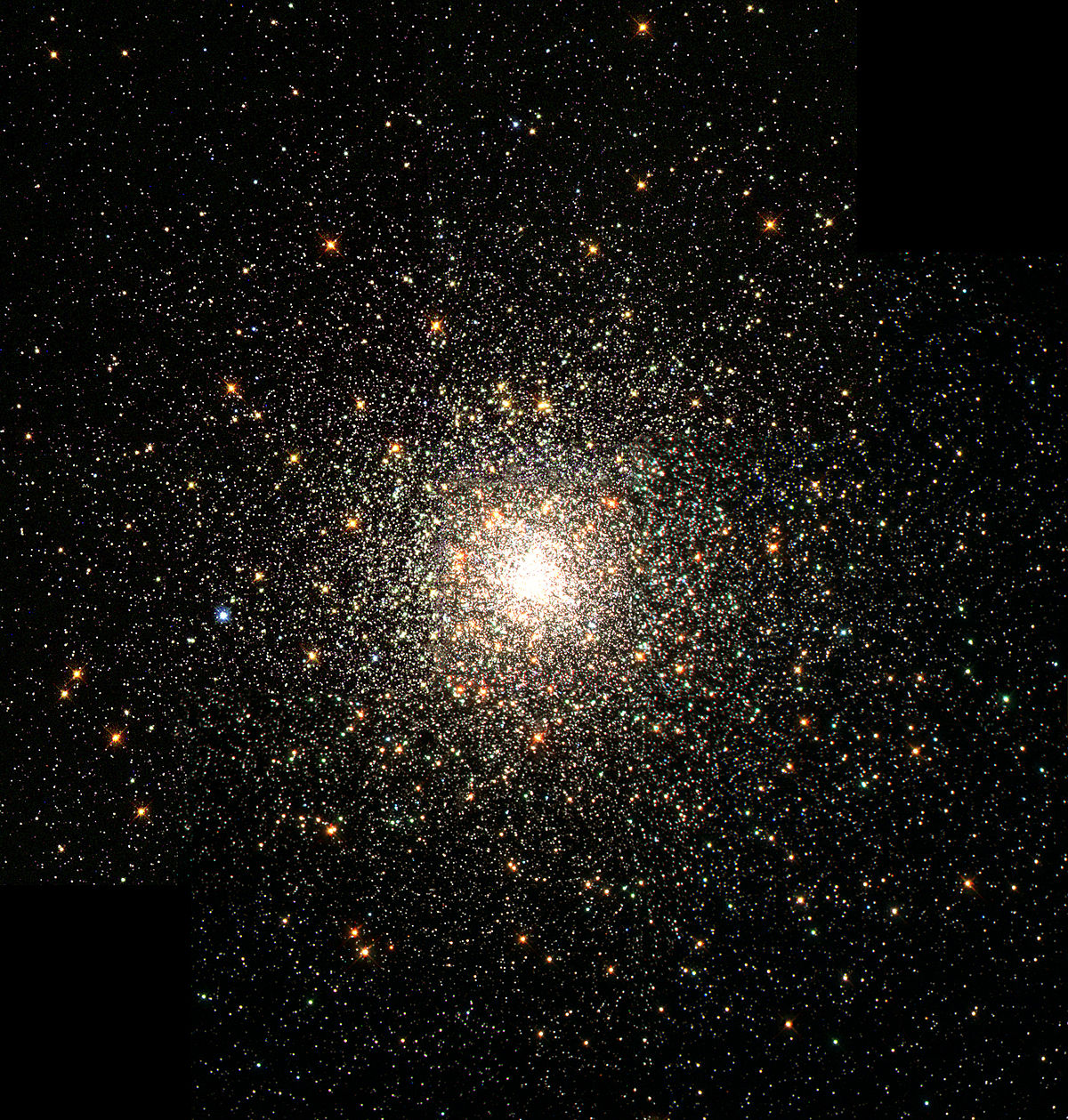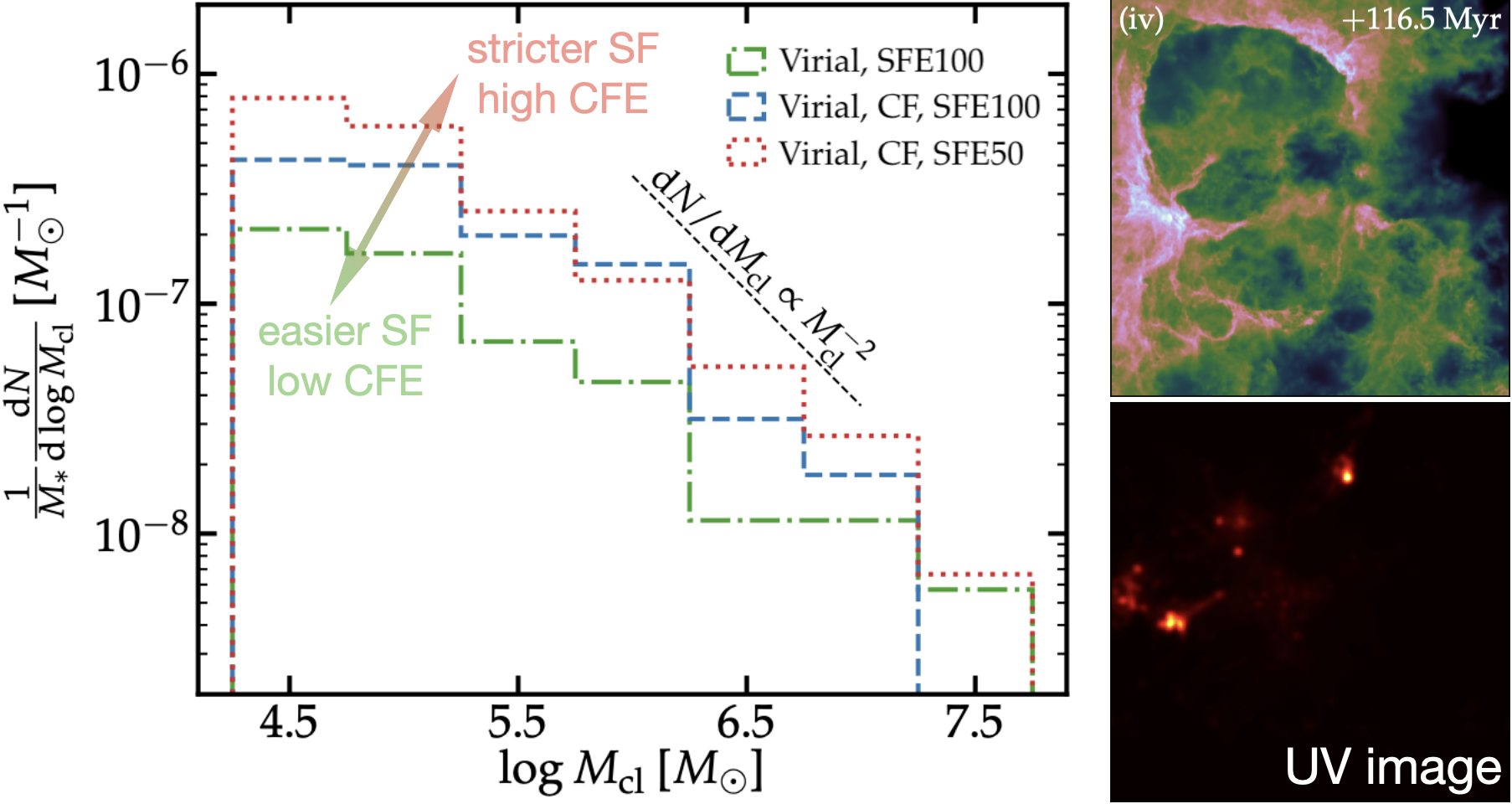The formation of proto-globular clusters (GCs)

Globular clusters (GCs) are fossile records of galaxy formation. These are spherical, gravitationally bound, old (5-13 Gyrs old), massive (~104-106M⊙), compact (0.5-10 pc), and metal-poor (-2.5 ≲ [Fe/H] ≲ 0.3) stellar systems that exist in nearly all galaxies above M*~109M⊙ in the local Universe.
The common wisdom is that GCs formed in the most high-pressure, high-density regions in the ISM during typical star formation activities in high-redshift galaxies. GC formation is a multi-scale problem that is challenging for galaxy formation because of their compact sizes. Usually semi-analytic and "sub-grid" GC formation models are adopted to study GCs over cosmic time.
Explicitly resolved GC formation in cosmological simulations
In Ma et al. (2020a, MNRAS, 493, 4315), we report the first cosmological simulations that explicitly resolve the formation of proto-GCs. Using high-resolution cosmological zoom-in simulations of galaxies at z ≳ 5 from the FIRE in the high-redshift Universe sample, we find a large number of compact, gravitationally bound star clusters form in galaxies spanning ≳ 3 orders of magnitude in M*, following a power-law cluster mass function. Note that not long ago, it was still a big news to form one GC in similar simulations (e.g. Kim, Ma et al. 2018; Mandelker et al. 2018)
Our results confirm the hypothesis that GCs form in the most high-pressure regions in the ISM. We find that clusters form efficiently in highly gas-rich, turbulent environments, where gas can be constantly compressed to extremely high pressures by cloud-cloud collisions and feedback-driven winds (see movie below).
Movie: The formation process of compact, bound star clusters in ultra-high-pressure regions formed via compression by cloud-cloud collision (top) and feedback-driven winds (bottom), taken from Ma et al. (2020a). The left column shows the galaxy-scale gas image. Click here and here for higher-quality version of the two animations.
Our work opens a brand new approach of studying GCs over cosmic time. For example, we study the Lyman-continuum escape fraction proto-GCs and their contribution to cosmic reionization (Ma et al. 2020c, MNRAS, submitted). With Omid Sameie and Mike Boylan-Kolchin, we apply this approach to explore the occupation of GCs in simulations of present-day ultra-faint dwarf galaxies (Mhalo ≲ 1010M⊙; Sameie et al., in preparation).
Cluster formation as a constraint of galaxy formation physics
In Ma et al. (2020a), we also find the cluster formation efficiency (i.e. the number of star clusters at a given mass formed per unit star formation) depends on the details of star formation and feedback models implemented in our simulations (see figure below). Moreover, the spatial extent of newly formed clusters reflects the radius of influence of stellar feedback (the right column).
With the assist of strong gravitational lensing, recent observations begin to probe individual cluster formation sites out to z ~ 3-6. In the future, JWST, Roman space telescope, and 30 m-class telescopes (TMT, GMT and ELT) will provide much larger statistical samples of such clusters/complexes across cosmic time.

Figure: Left: Cluster formation efficiencies under different star formation criteria, from Ma et al. (2020a).
Top right: Gas image during a blow-out event. The strong winds trigger cluster formation at the compressed front.
Bottom right: Rest-frame UV image of the galaxy. The newly formed clusters stand out.
I view this as a great opportunity to use star clusters as a constraint of the star formation and feedback physics in cosmological simulations. In future work, we plan to predict the mass functions, luminosity functions, and two-point correlation functions of young clusters/complexes for galaxies in a broad range of mass and redshift, using the entire FIRE simulation sample. We will also forward model the simulations to repeat this analysis to bright "clumps", which can be confronted directly with future observations.
Back to research